
Almost all types of hormonal birth control switch off ovarian function and, therefore, switch off the ovarian hormones estradiol, testosterone, and progesterone. Here’s a bit more about each method.
Hormones during a natural menstrual cycle
In a healthy, natural menstrual cycle, hormones are made by ovulating. Specifically, the ovarian hormones estradiol and testosterone are made on the way to ovulation, and then progesterone is made after ovulation.
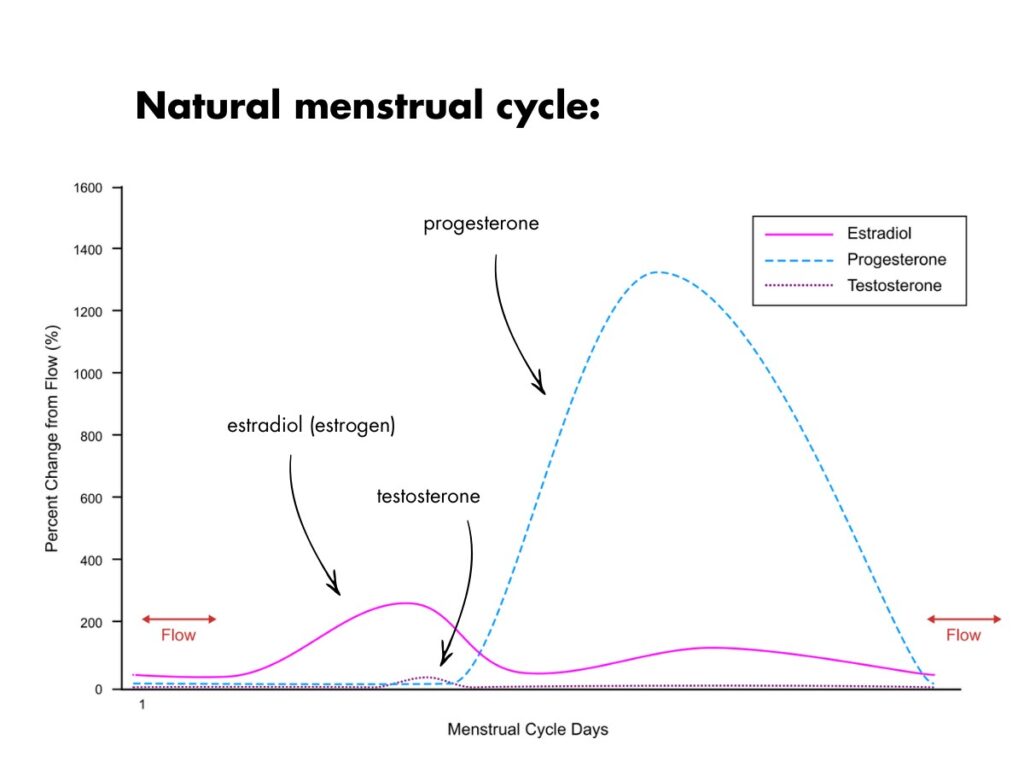
💡 Tip: Ovulation is the main hormonal event of the menstrual cycle.
Non-hormonal birth control methods such as condoms, the copper IUD, and fertility awareness methods do not suppress ovulation, so do not alter hormones, and the hormonal pattern should be normal, assuming nothing else is interfering with ovulation.
The hormonal IUD does not always suppress ovulation, although it sometimes can. If the hormonal IUD permits ovulation, then the hormonal pattern should be a natural cycle, even if menstrual bleeding is suppressed. (In the case of IUD-suppressed bleeding, the hidden hormonal cycle can be tracked with basal body temperatures or BBTs.)
Hormones on a combined estrogen birth control method
On a combined estrogen method, such as the pill, patch, or Nuvaring, ovulation is suppressed, and all hormones—estradiol, testosterone, and progesterone—are flat-lined. Some of the lower-dose combined pills permit a slight rise in estradiol, but most combined methods suppress it completely until the sugar pill week, when estrogen will rise a little, followed by an induced withdrawal bleed.
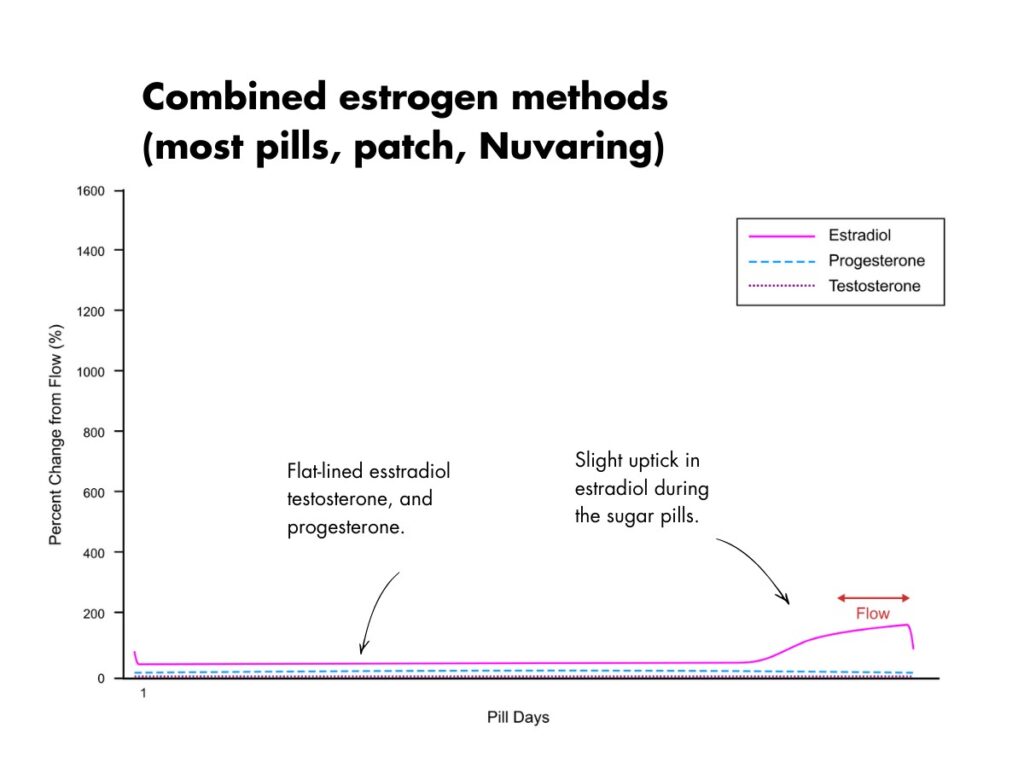
💡 Tip: Pill withdrawal bleeds are not menstrual cycles. And there’s no medical reason to bleed monthly on the pill.
Hormones on a progestin-only method
On a progestin-only method like an implant or mini-pill, estradiol does rise, but not as much as it would with an ovulatory cycle. But ovulation is suppressed, so there’s no progesterone. Under the influence of estradiol, the uterine lining can thicken until it reaches the point that it just lets go, especially if estrogen drops a little.
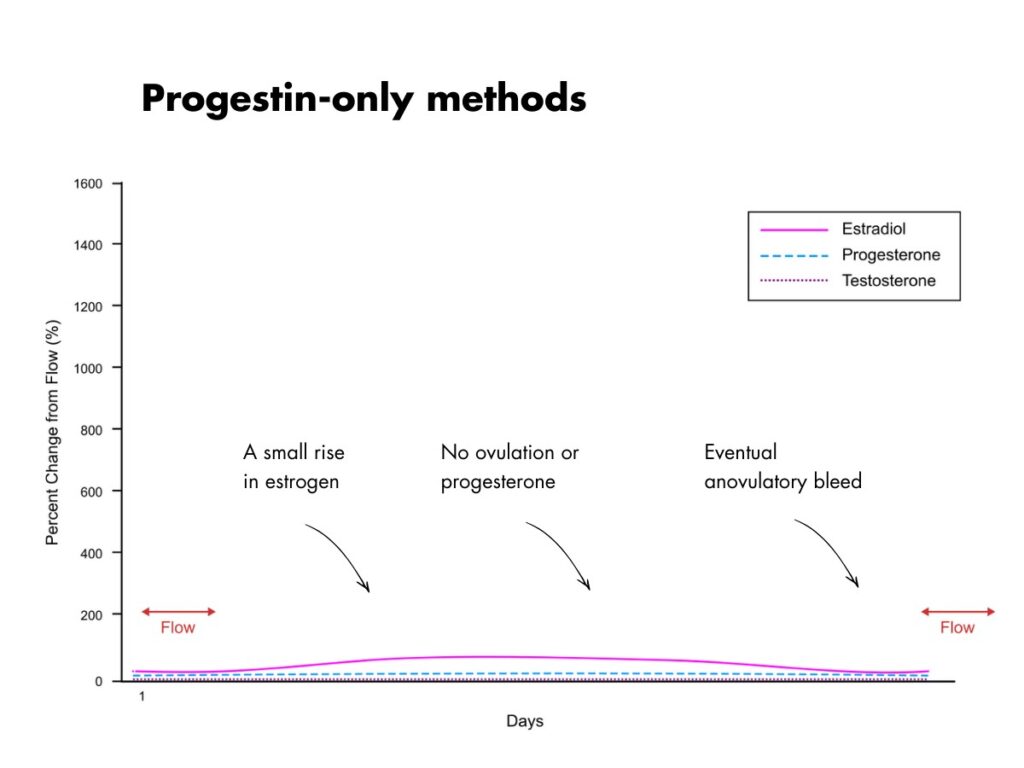
So, on a progestin-only method, there will usually be bleeds, but they’re anovulatory bleeds, not menstrual cycles or induced withdrawal bleeds.
Anovulatory bleeds also occur with polycystic ovary syndrome (PCOS) and perimenopause, but in those situations, estradiol rises higher than with progestin-only birth control.
But doesn’t hormonal birth control supply the missing hormones?
Hormonal birth control supplies synthetic versions of hormones, but they are not the same as natural estradiol and progesterone.
For example, the synthetic estrogen used in birth control is ethinylestradiol. It’s not estradiol, so does not show up on a blood test for estradiol.
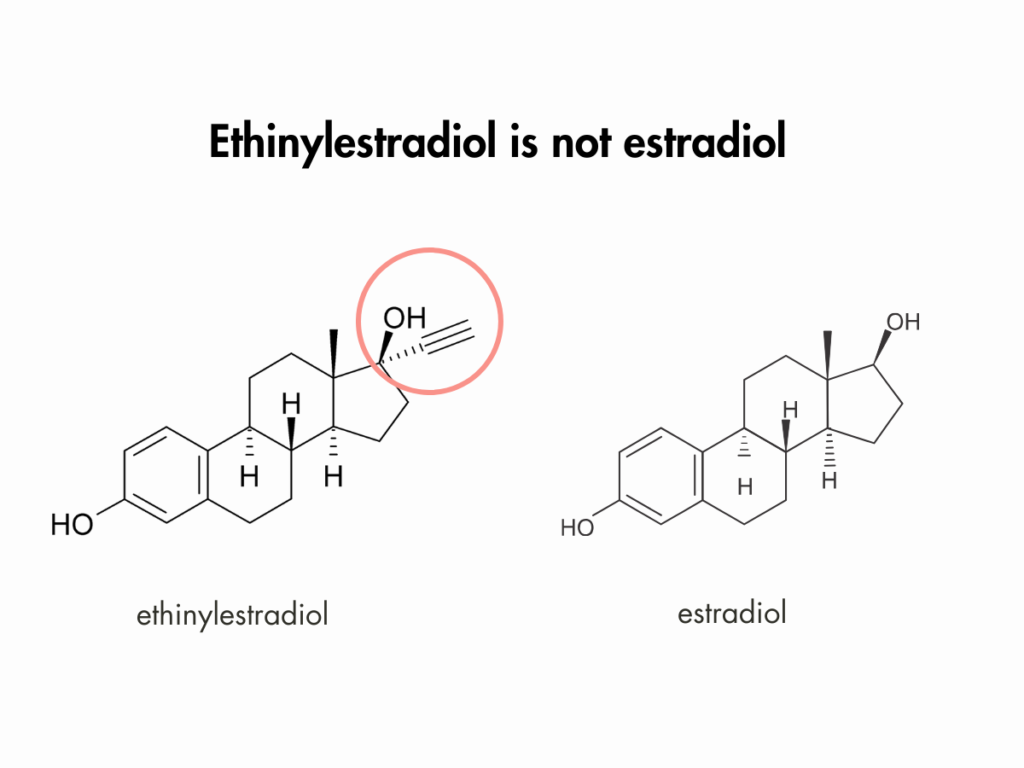
And although ethinylestradiol can have some of the same effects as estradiol, it also has some quite different effects, particularly for the brain and bone health.
Likewise, progestins are not progesterone.
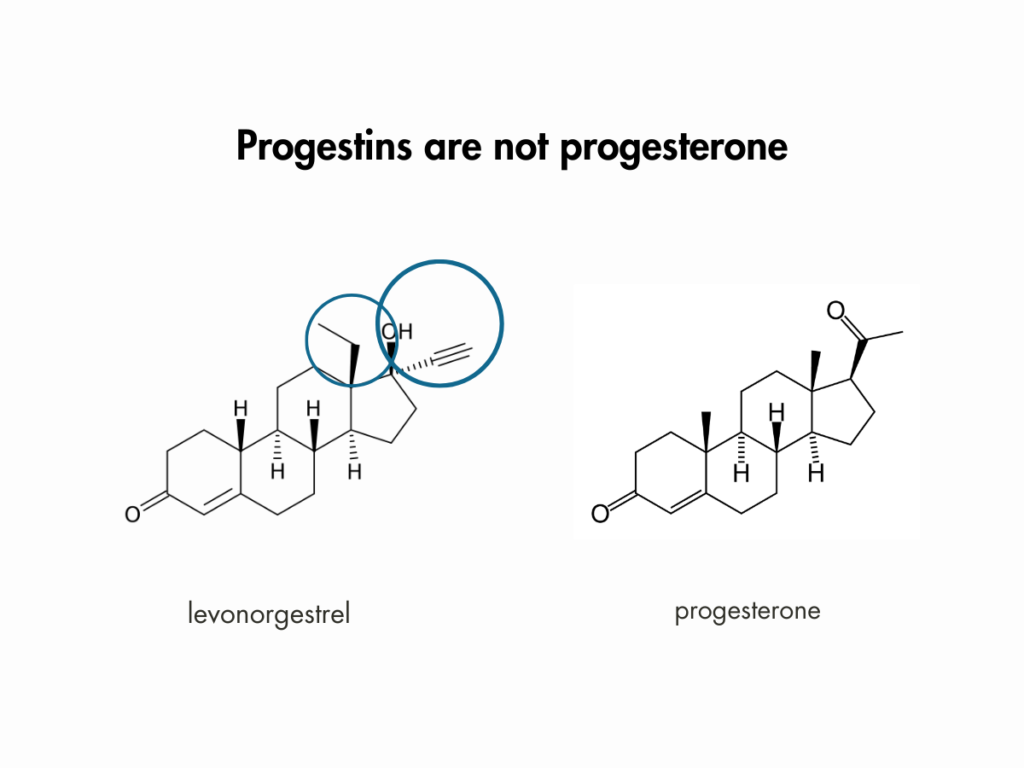
Sadly, progestins can have quite different—in many cases, opposite—effects compared to progesterone. See The crucial difference between progesterone and progestins.
Chime in with your experience and questions!
